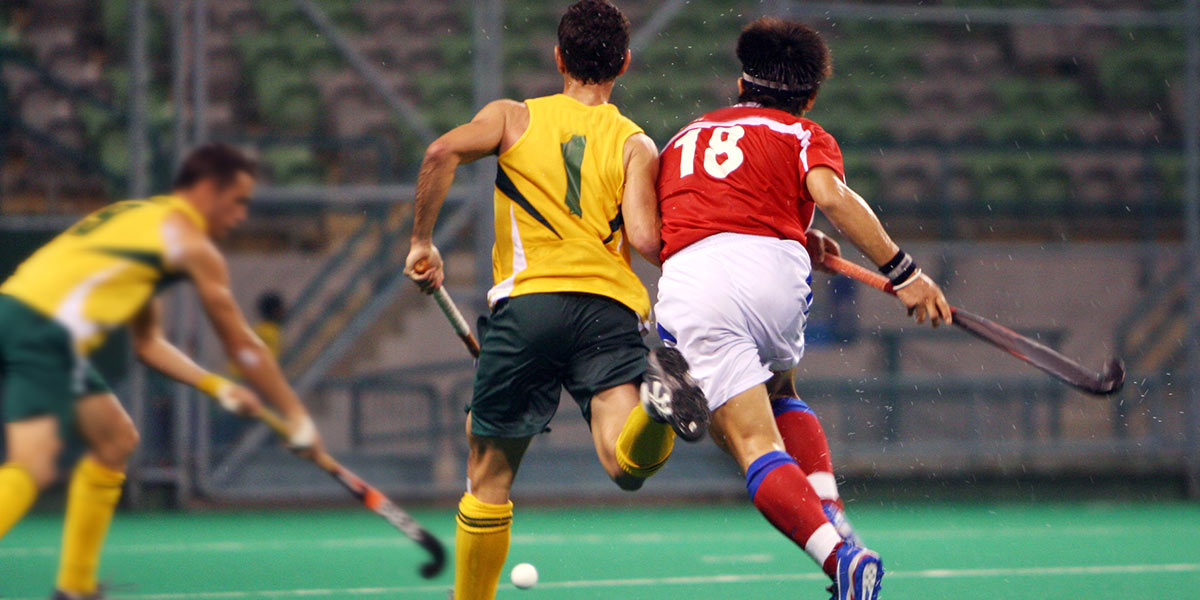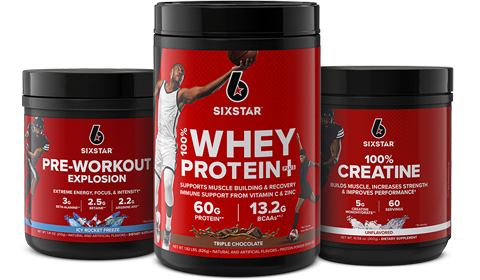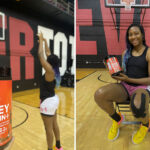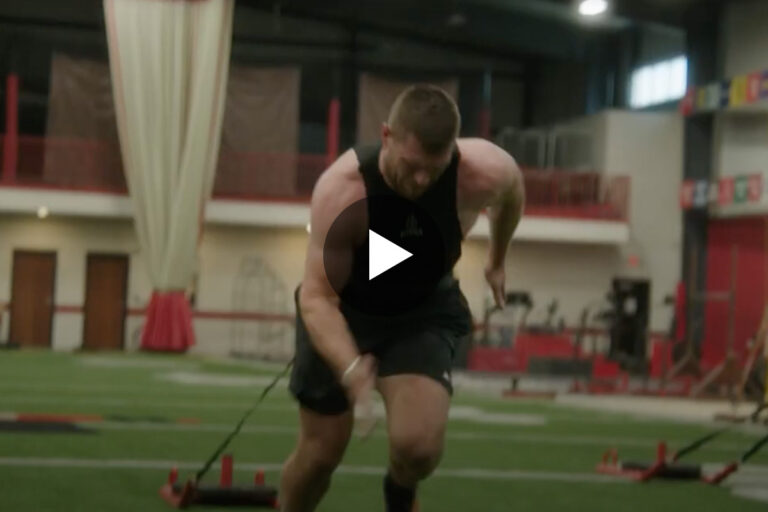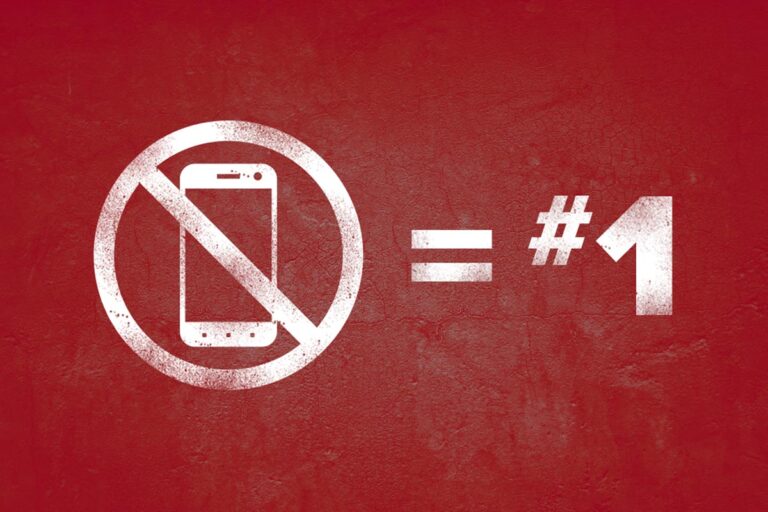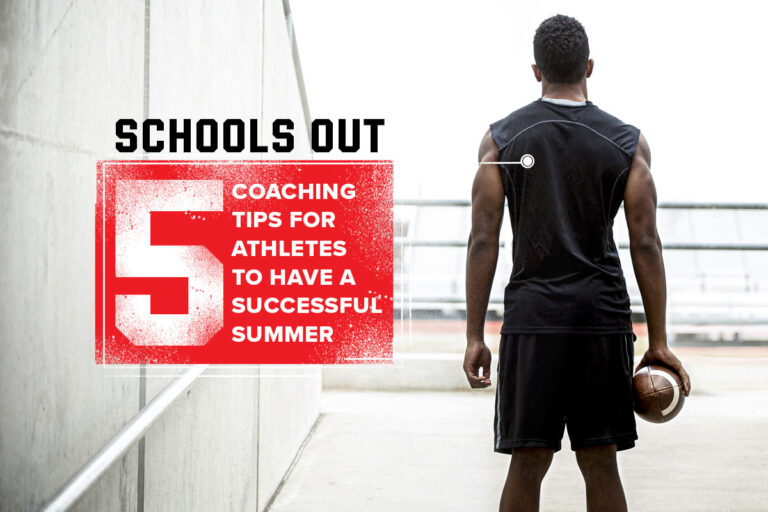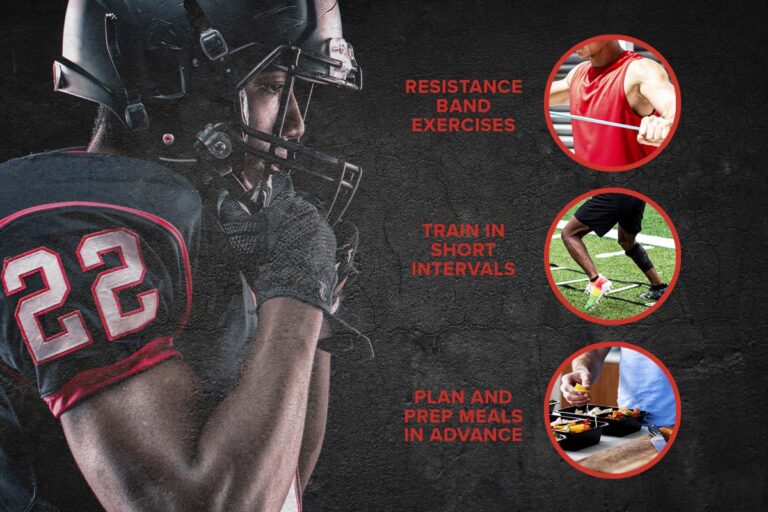Field hockey is an extremely competitive sport that requires outstanding fitness, sound fundamentals, and a high field hockey IQ. So, if you want to maintain an edge over your opponents and stand out on the field once the season rolls around, it’s important to make the most of your off-season training program.
As any elite athlete knows, the best way to stay in shape is to never get out of shape in the first place. So, give yourself some time to rest and recharge after the season and then get right back to work building up your endurance and strength.
This 60-minute field hockey practice plan places an emphasis on conditioning, ball control and passing, and the ability to make smart, split-second decisions. By enhancing these parts of your game, you’ll be unstoppable on the field.
Warm Up (10 Minutes)
While you might be tempted to just get out there and start practicing, a good warm up and stretching routine can help to minimize muscle imbalances, prevent injury, improve your exercise tolerance, and enhance your field hockey performance.
Begin practice with five minutes of light running and then do five minutes of dynamic stretching once your muscles are warm and relaxed. Essential dynamic stretches for field hockey are arm swings, forward and back legs swings, sideways leg swings, the back rotation stretch, leg curls, and lunges. After you do these dynamic stretches, your muscles will be ready for the rapid elongation that will incur during your practice session.
Individual (Or Team) Conditioning Drills (20 Minutes)
To build your endurance back up to where it was last season, it’s important to do conditioning drills both with and without a stick and ball. Don’t worry so much about trying to get your conditioning back to where it was last season during your first practice session, but aim to get stronger and better each time that you do these drills. And while you can do all these conditioning drills on your own, having a friend or teammates to condition with will most likely push you all harder.
For Endurance
Mini Gauntlet: The Mini Gauntlet will help you build your endurance back up. Run three laps in 5 minutes and 15 seconds, two laps in 3 minutes and 15 seconds, and one lap in 1 minute and 45 seconds with two minutes of rest in between each lap. Then to finish off the Mini Gauntlet, run a half lap in 45 seconds and then rest before moving on to the next drill.
For Quickness
Shuttle Run: Field hockey players need to be physically fit, athletic in their movements, and quick. The Shuttle Run is a great drill for building speed and agility. To do the Shuttle Run drill, set up cones about 25 yards apart. Then sprint from one cone to the other and back. That’s one repetition. Do six repetitions as fast as you can for a total of 300 yards. Time yourself or have a teammate time you. Then try to beat your previous time at your next practice session.
To Improve Agility and Dribbling Skills
M Drill with Stick and Ball: To set up this M Drill that will improve both your agility and dribbling skills, place five cones in a ‘M’ shape with eight yards in between each cone in the ‘M,’ as well as eight yards between the start cone and the finish cone. Start at the bottom of the ‘M’ and slalom through to the top of the ‘M.’ Straight dribble through the middle of the ‘M’ to the other top of the ‘M.’ Then slalom through the other side of the ‘M’ to complete this drill.
Field Hockey Drills (25 Minutes)
Practicing with teammates will allow you to work on passing and shooting, 1v1 or 2v1 training, and goalie training. It will also help you develop chemistry and learn how to communicate effectively with one another, too.
Moving and Passing Drill: Since field hockey is a dynamic sport that involves a lot of running, you need to be able to pass to your teammates and receive passes from your teammates while moving. To do this Moving and Passing drill, you and a teammate will start at one goal and then move toward the other goal. Keep a distance of 20 or so feet between you and your teammate and run toward the other goal while passing the ball back and forth. Once you make it to the other goal, start going back, but maintain your positions so you can practice passing to the other side, as well. As your off-season training progresses, you can increase your moving speed, the distance between you and your partner, and your passing speed.
One-on-One or Two-on-One (With A Goalie) Drill: Depending upon how many teammates you have, you can either do on-one-one or two-on-one drills with a goalie. For the one-on-one drill, the attacking player should try and work the ball past the defending player and get a shot on goal, forcing the goalie to make a save. This one-on-one drill with a goalie helps to promote close-in dribbling skills, good tackling technique, and will allow the goalie to work on body position and angles.
For the two-on-one drill, you should make the attacking players have to pass the ball to each other at least twice before shooting on the goalie, and the defensive player should attempt to get between the attackers in order to break up the scoring opportunity. Make sure to rotate the players on offense and defense every couple of minutes, too. And if you’re alone, you can still practice being the attacker. Just pretend that there’s a defender that you need to dribble around and then fire a shot on goal.
Hit The Cone Drill: It’s usually fun to end practice with a little game. You can do just that with this Hit The Cone drill. All you need to do is place a cone in the center of the goal and then have a competition with your teammates to see who can hit the cone with a shot. You can try to hit the cone from different parts of the field and have a point scoring system based on how close or far away from the cone that you are when shooting. To up the stakes, the winner can choose the time that you and your teammates will meet up for your next practice session.
Cool Down (5 Minutes)
At the end of your practice session, don’t just pack up your stuff and head home. Instead, take five minutes or so to do static stretches as part of your cool down. Doing static stretches such as the hamstring stretch, quadriceps stretch, hip flexor stretch, groin stretch, gluteal stretch, calf stretch, and the posterior shoulder stretch will help you improve your overall flexibility. Slowly take your muscles to the end of their range and hold each stretch for 30 seconds in a static position. While training is certainly important in the off-season, make sure to rest a couple of days each week to allow your muscles to recover. If you’re someone who prefers not to take any days off, then watch video on your ‘off’ day(s). Video analysis will help you improve visual awareness and show you where to move in order to get into better positions.
